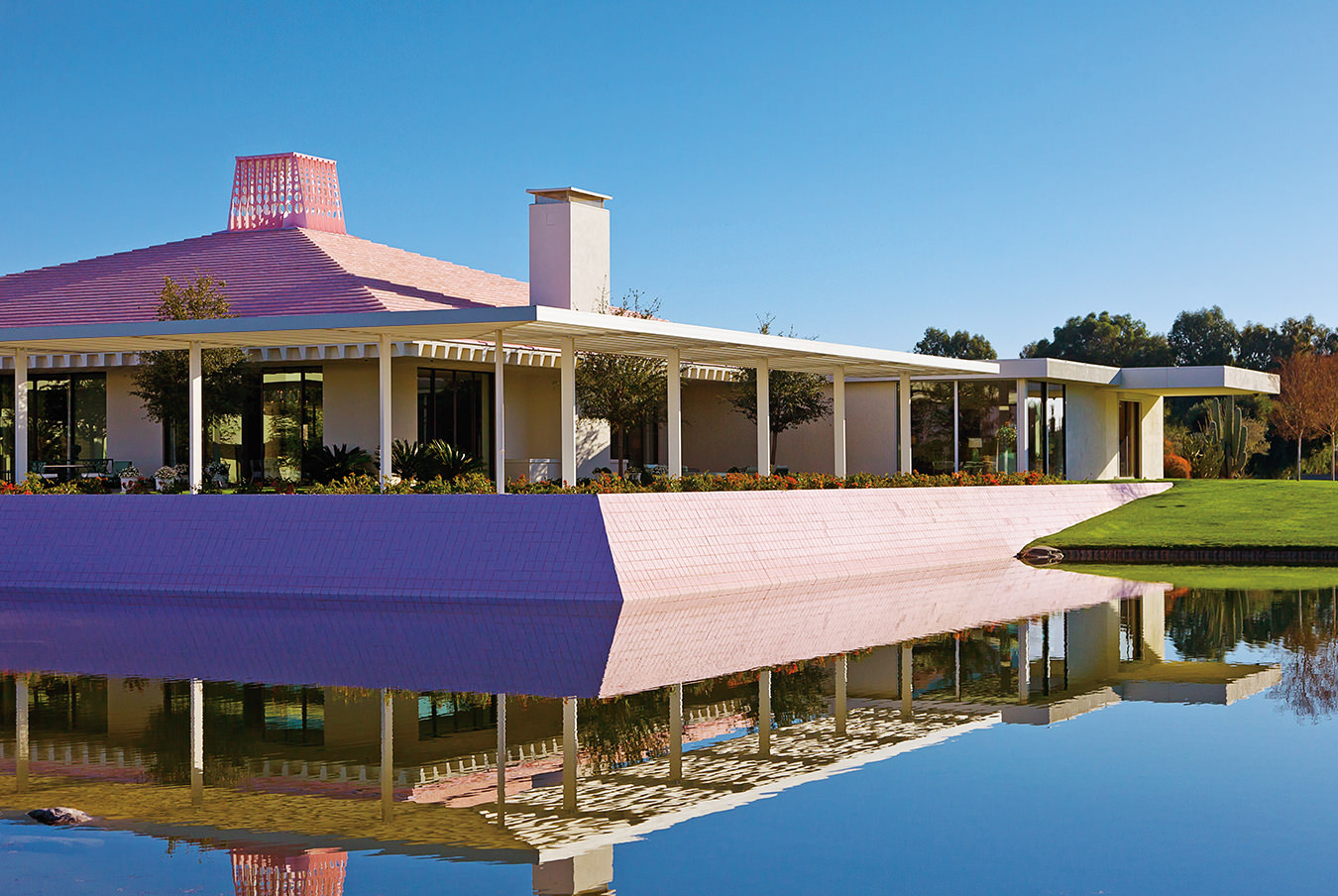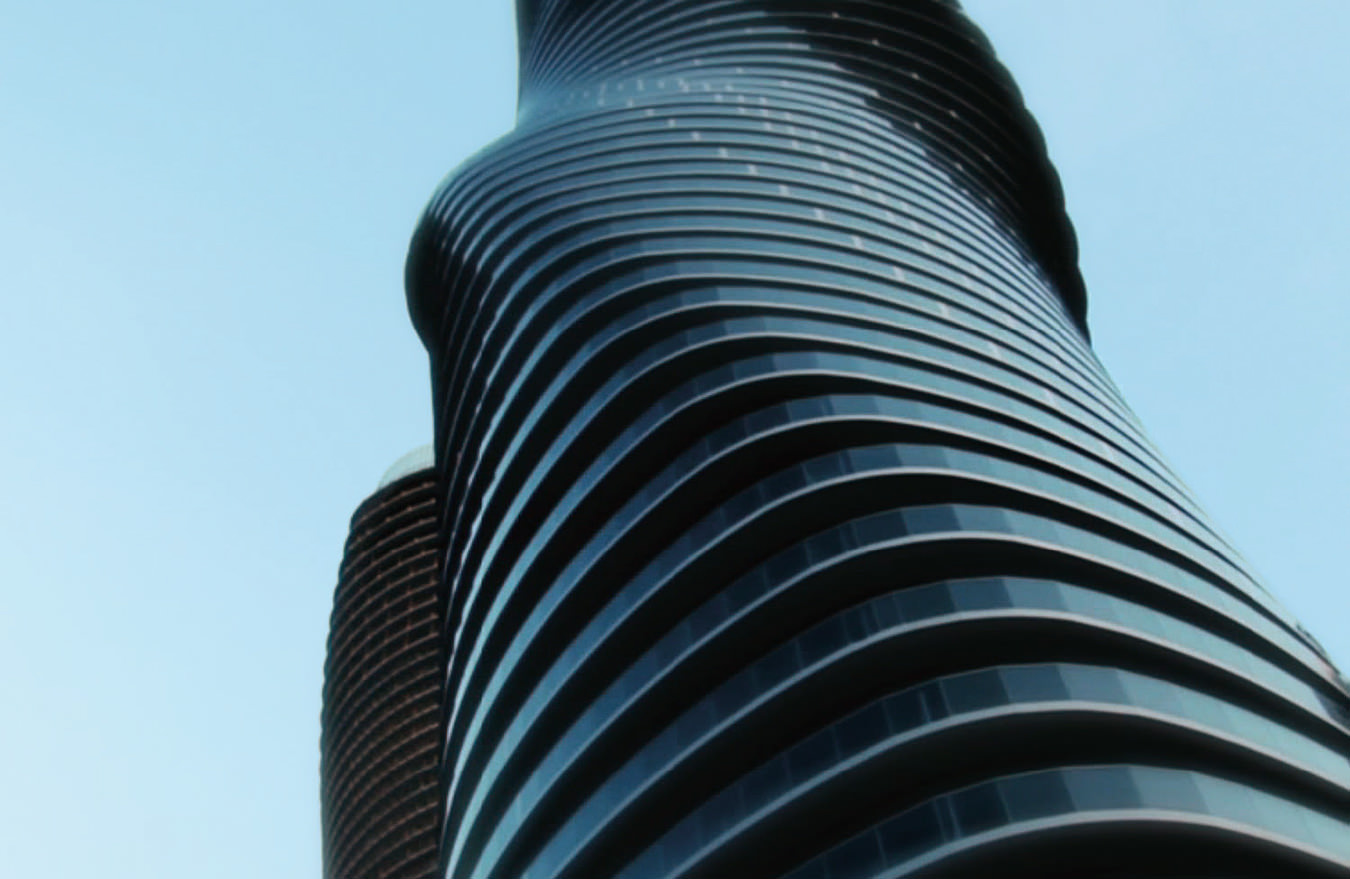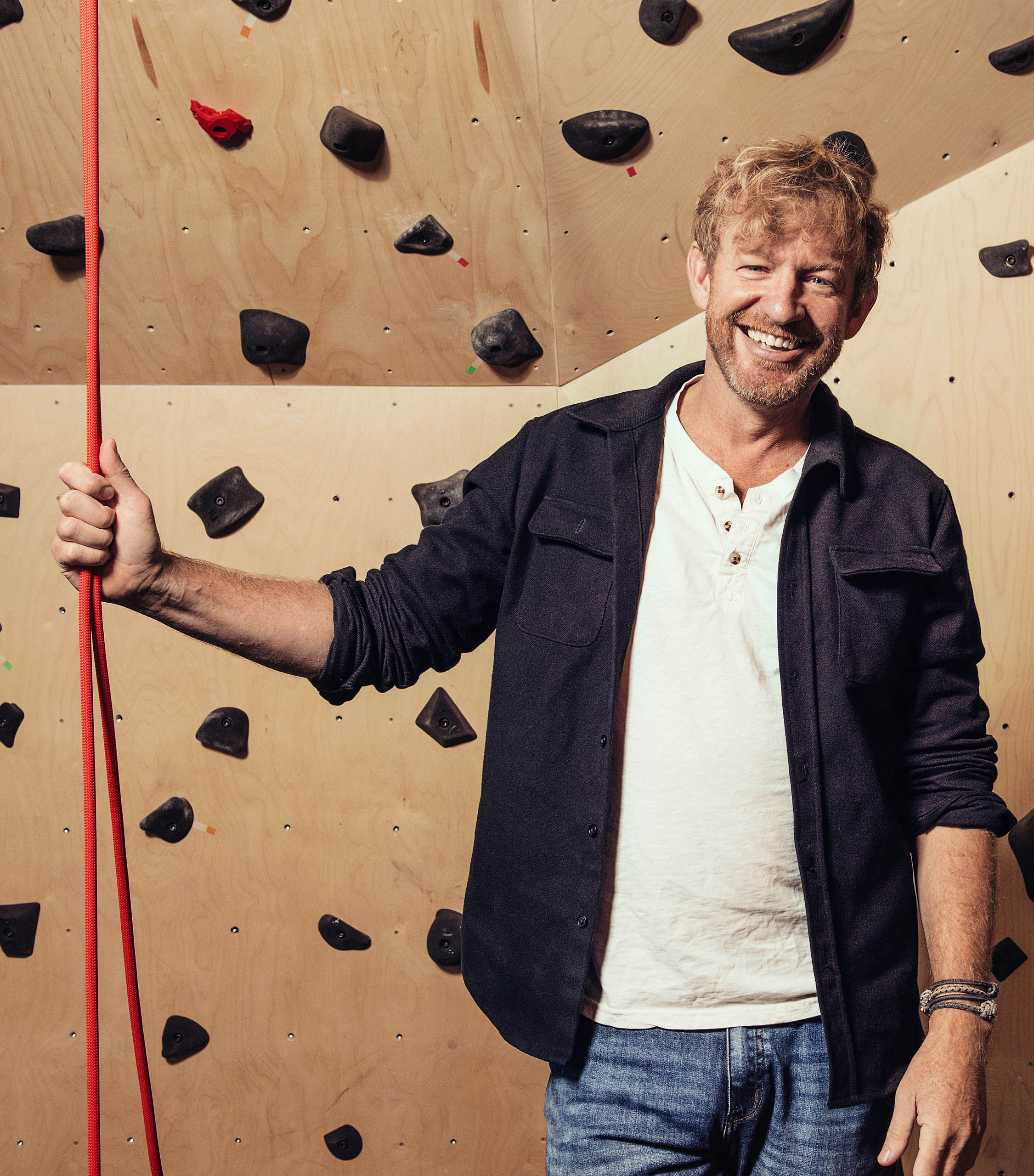
Architect Michael Green on Impact, Legacy, and the Risks We Take for a Better World
A future built by the sun.
_________
How many slogans and empty calls to do better can we hear before beginning to lose hope about the climate? How many times can we be disappointed by leaders who use the urgency and nervousness about climate to garner support but ultimately do nothing?
These questions and the climate exigencies that drive them are ubiquitous, and there seems no end to the fear-mongering and platitudes the crisis produces. But as I prepare to speak with Michael Green, I’m for once excited to think about these issues, for I know Green’s theories and plans for architecturally relevant climate solutions have teeth. His story is one of ambition, of growth and diverging roots, of ancient technologies harnessed and spread across the globe. It is one of concern.
“The climate story is scaring people into inaction,” Green says. “And people are cowering and hiding in the closet because they feel like they can have no impact. And telling people, you know, buy electric cars and turn off the lights is obviously not enough to make things actually happen.”
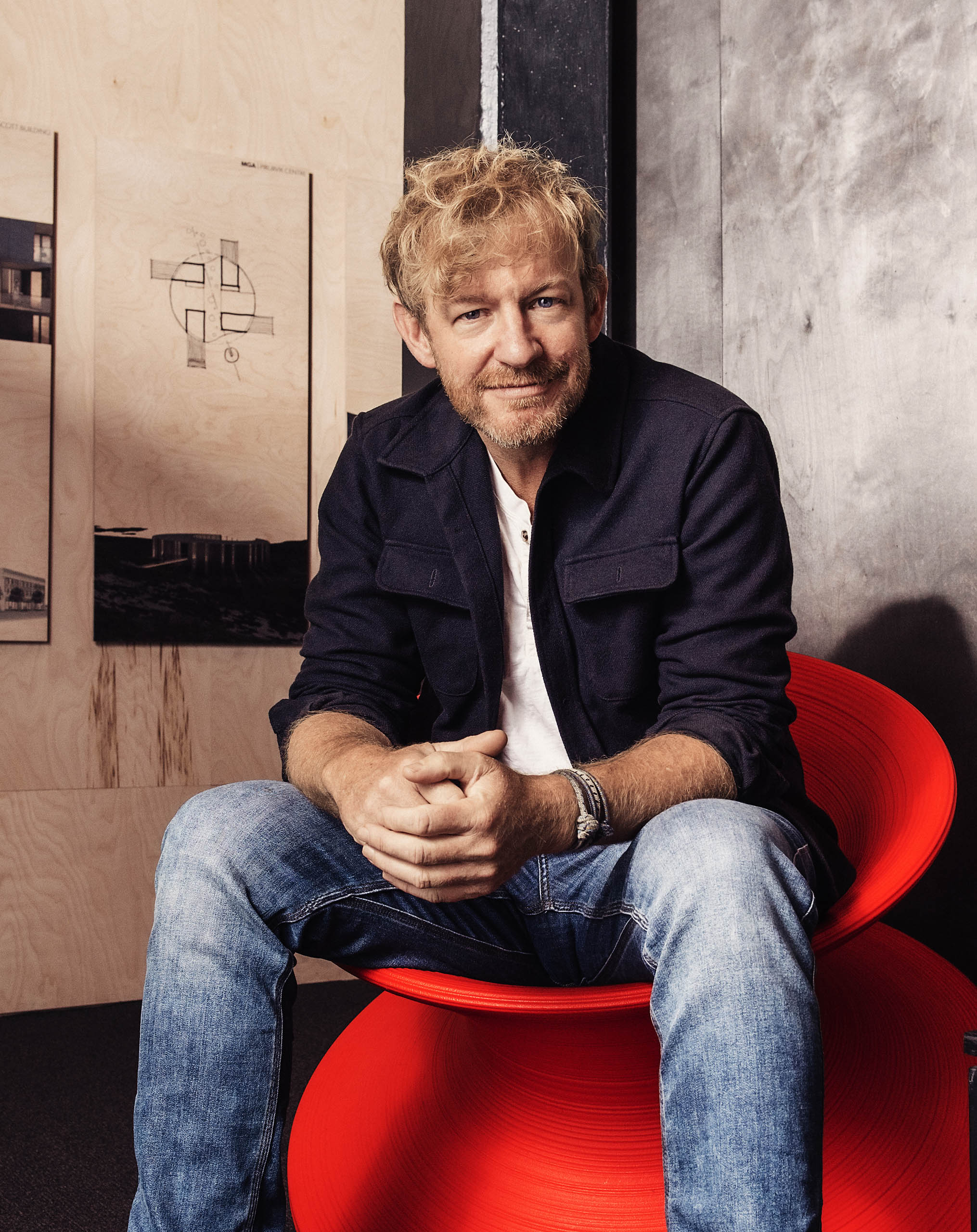
When Michael Green talks, it’s hard not to listen. The architect speaks with a confidence that is not over-rehearsed despite his many speaking engagements over the years—including the 2013 TED Talk that propelled him to international fame for his support of mass timber: the construction of huge structures from engineered timber products. Green jokes and speaks casually, and like trees, his ideas branch, testing themselves in real time, adapting to conditions. Green is tall with tousled sandy hair and is known in his office for periodically putting his shirts on inside-out, but this casual nature belies the intense ambition that drives him and his practice.
Before his formative years in Ottawa, Green lived in the Arctic with his father, who worked as an administrator for the federal government, where he gained a deep appreciation for nature and the value of cultures that worked with limited resources. He jokes that a piece of wood washing up on the shore was like finding a piece of gold. Green attended Cornell and then worked for César Pelli during the construction of the Petronas Towers, the tallest buildings in the world at the turn of the millennium, giving him first-hand experience of the practices surrounding skyscrapers and urbanization.
Feeling the need to return to Canada, Green moved his young family to Vancouver, where he joined Architectura, then one of the city’s largest firms. There, he worked on projects such as the Ottawa airport, which he would expand with McFarlane Green Biggar Architecture & Design, the firm he co-founded with then-partners Steve McFarlane and Michele Biggar in 2003. At the time, his love of nature and the global concern over climate change were increasing, and he wasn’t seeing enough changes in urban architecture.
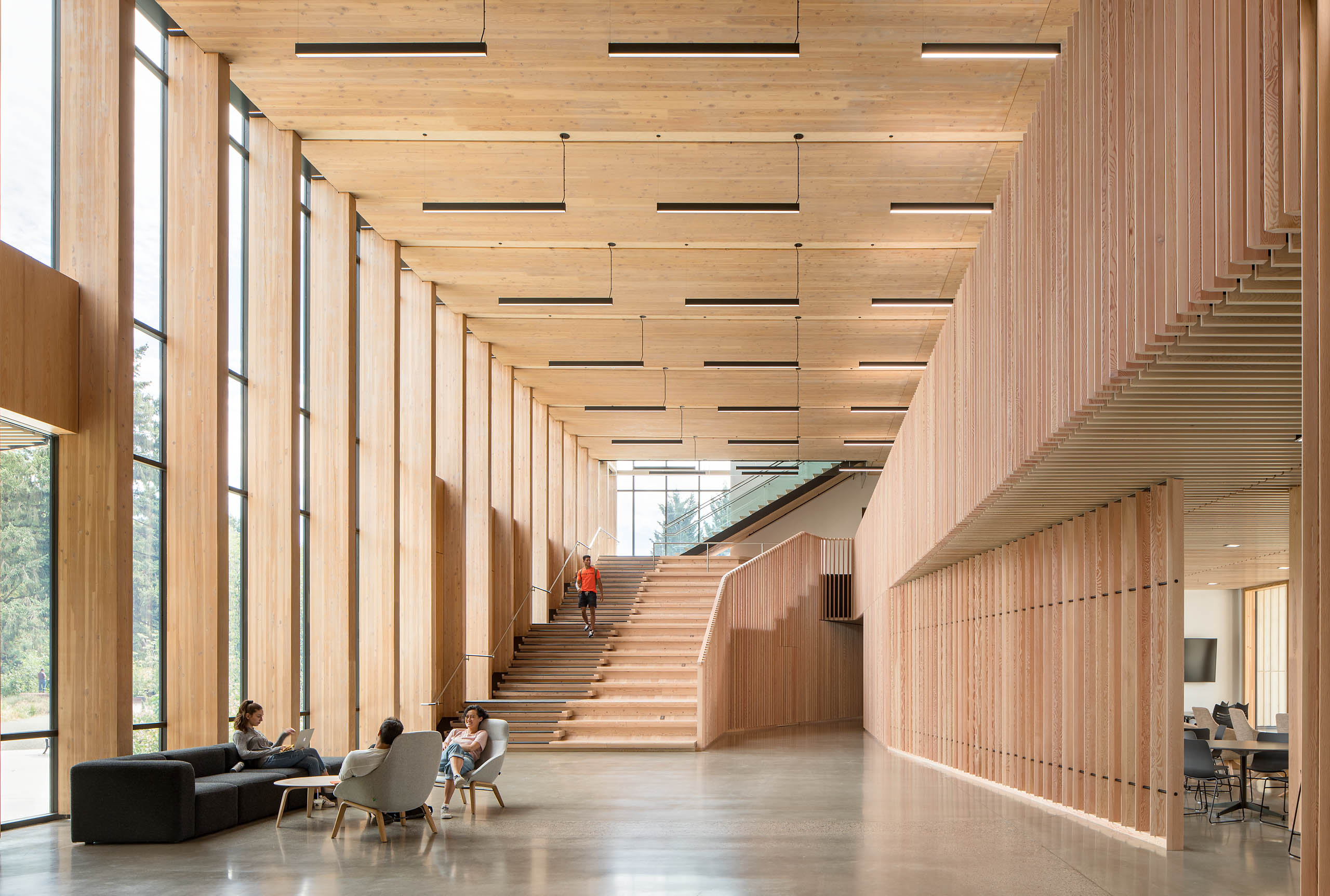
MGA designed Peavy Hall, part of Oregon State University’s Forest Sciences Complex, to showcase innovations in forestry and ecosystem design. Photo by Josh Partee.
Around 2012, Green went on a series of trips with his children that included Japan and Tasmania. A month-long visit to the Antarctic spent kayaking off a Russian research vessel became the real turning point in his career. “You’re paddling next to gigantic icebergs the size of skyscrapers, and they’re rolling over and you see the power in the Earth,” Green recalls, “and you also think about climate and its relationship to this ice. Looking at my 10-year-old and realizing what my children’s lives would be like versus what it has been for me turned out to be profound, and I think that that time with him alone in the kayak gave me perspective. I decided to start over with a firm that was much more ambitious around how the industry can change.”
Everything changed. Green returned from Antarctica and formed his own company, Michael Green Architecture (MGA), effectively splitting his firm in a move he describes as divorce-like, asking the employees to choose—though he still retains a lot of respect for his past partners. It’s a lesson he has learned repeatedly in pursuit of his ideals: sometimes hard decisions must be made to break the mould and stir people to action. “The industry is pretty conservative—a lot of architects are very comfortable living within the rules,” he says. “I don’t do very well with rules.”
When he split the firm, Green was acting on an idea outlandish to the architecture and design communities: that products grown by the sun such as timber, hemp, and bamboo could be the materials for building not only homes but also skyscrapers 30 floors and taller. He set about making this vision a reality, and what was then seen as ridiculous is today inspiring young architects worldwide to think about the built environment in different ways.
“The industry is pretty conservative—a lot of architects are very comfortable living within the rules. I don’t do very well with rules.”
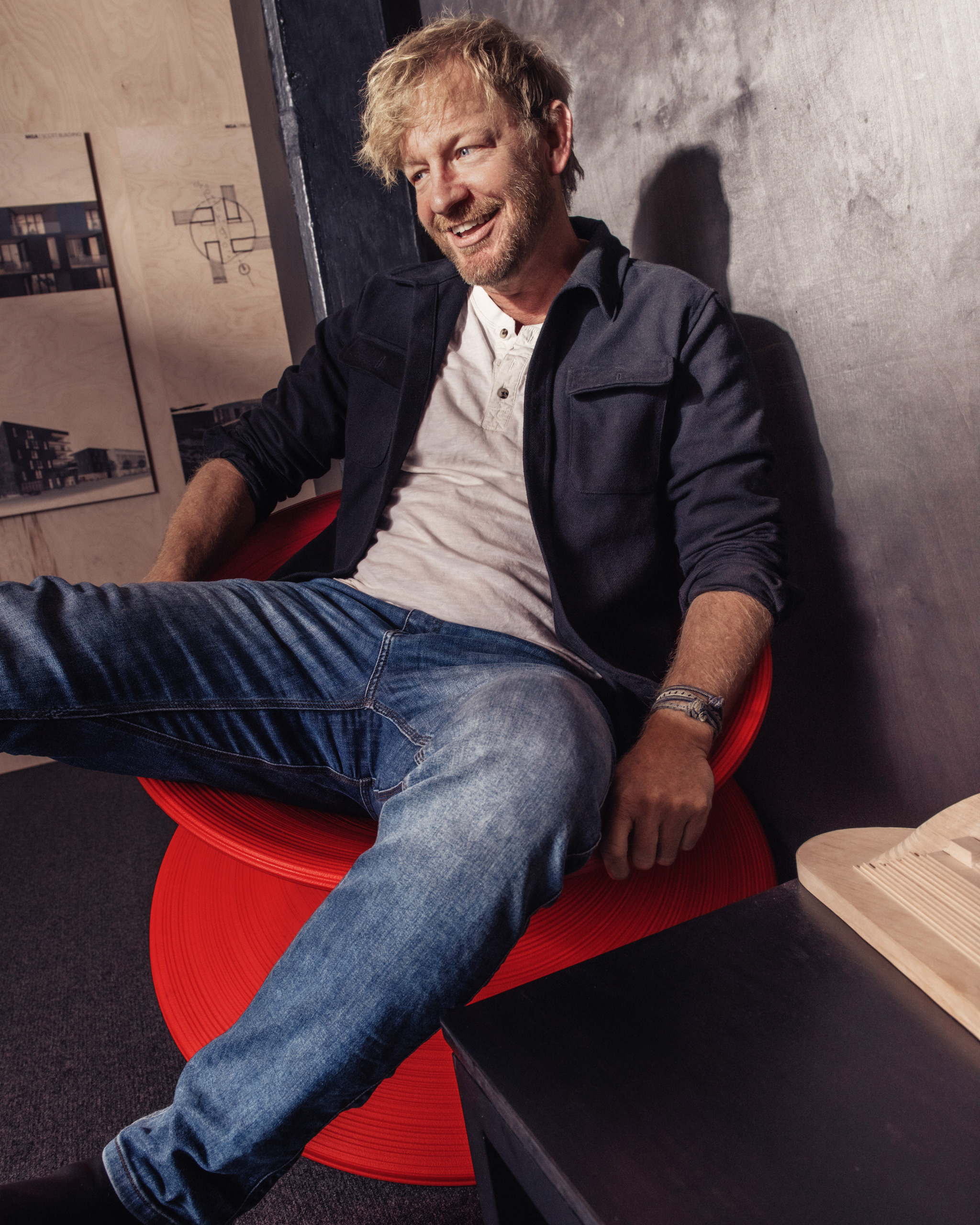
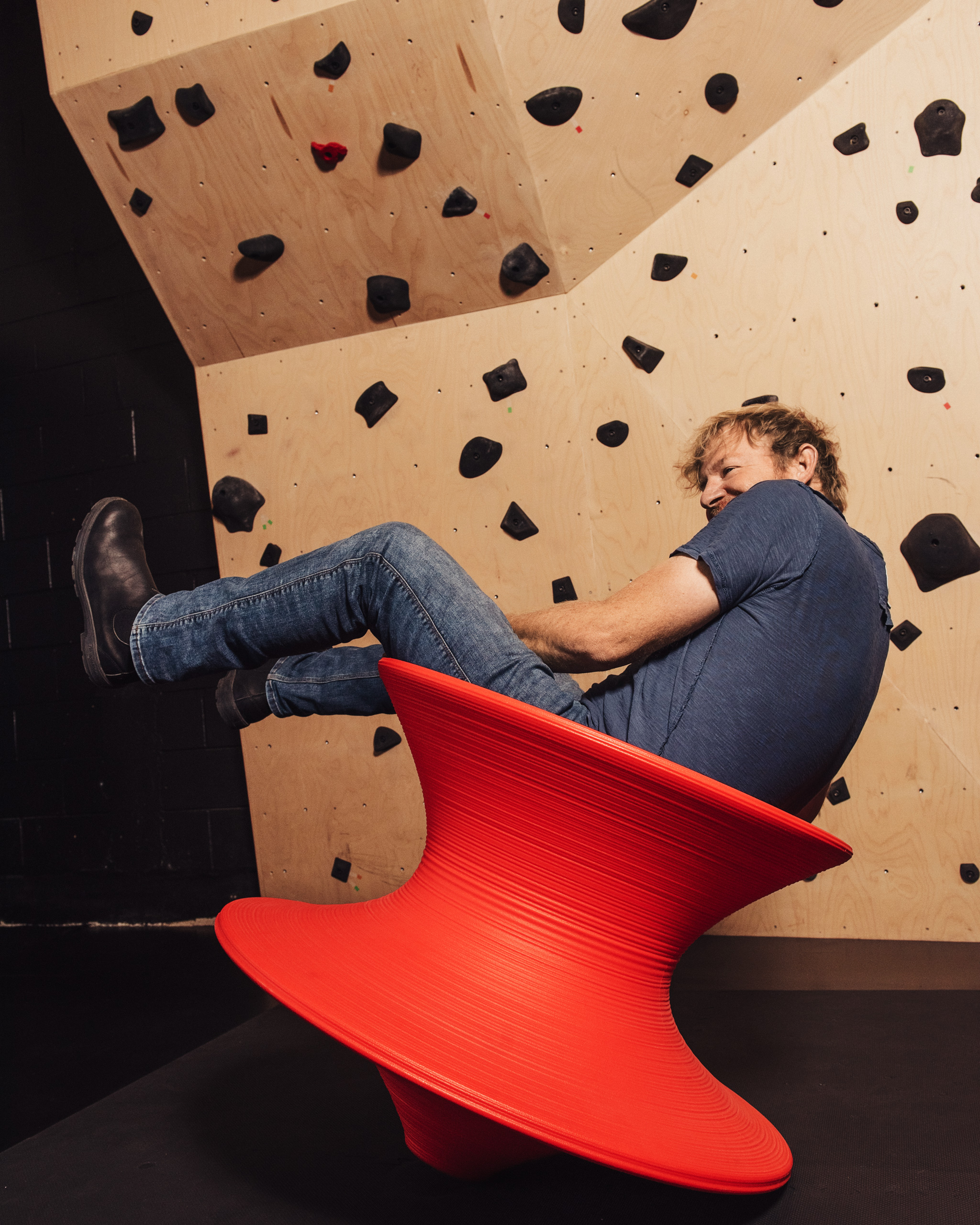
At its inception, MGA was possibly the only firm in North America using just wood in the building process, and this philosophy doesn’t stop at the construction or the material but considers wood from a holistic perspective. “The story’s simple, right? We’re surrounded by all the energy necessary to make our food and build our homes and serve our growing population and be able to meet that need globally. We have all those skills to do it. We’re just ignoring those skills,” insists Green, who believes that photosynthesis might be the single most important process on Earth to provide us with life and help manage climate change. While we grow our homes, we can also grow the supply of carbon. At the same time, one of the pillars of his practice is promoting forestry techniques and using local wood; mass timber allows smaller trees to be fused together to create large structural beams, which means more flexibility in the types of cuts that can be used.
Under Green and principal architect Natalie Telewiak, MGA continues to grow, building the Wood Innovation and Design Centre in Prince George, B.C., the tallest modern mass timber building when it opened in 2014, as well as winning multiple Royal Architecture Institute of Canada awards. Green has spoken at the East Wing of the White House and climate summits, and he has written several books. The firm has taken on projects all over the world.
MGA continues to grow, building the Wood Innovation and Design Centre in Prince George, B.C., the tallest modern mass timber building when it opened in 2014.
Richard Powers’ 2019 novel The Overstory suggests, through several characters’ root-like connection to one another and the environmental movement, that ours is the world of trees, and we are just living in it. Powers believes the Earth has developed a massive reserve of energy in its processes that we are squandering, and as we squander, we lose connection to one another and to the past. When we do use it, though, one of the main character states flatly, “What you make from a tree should be at least as miraculous as what you cut down.”
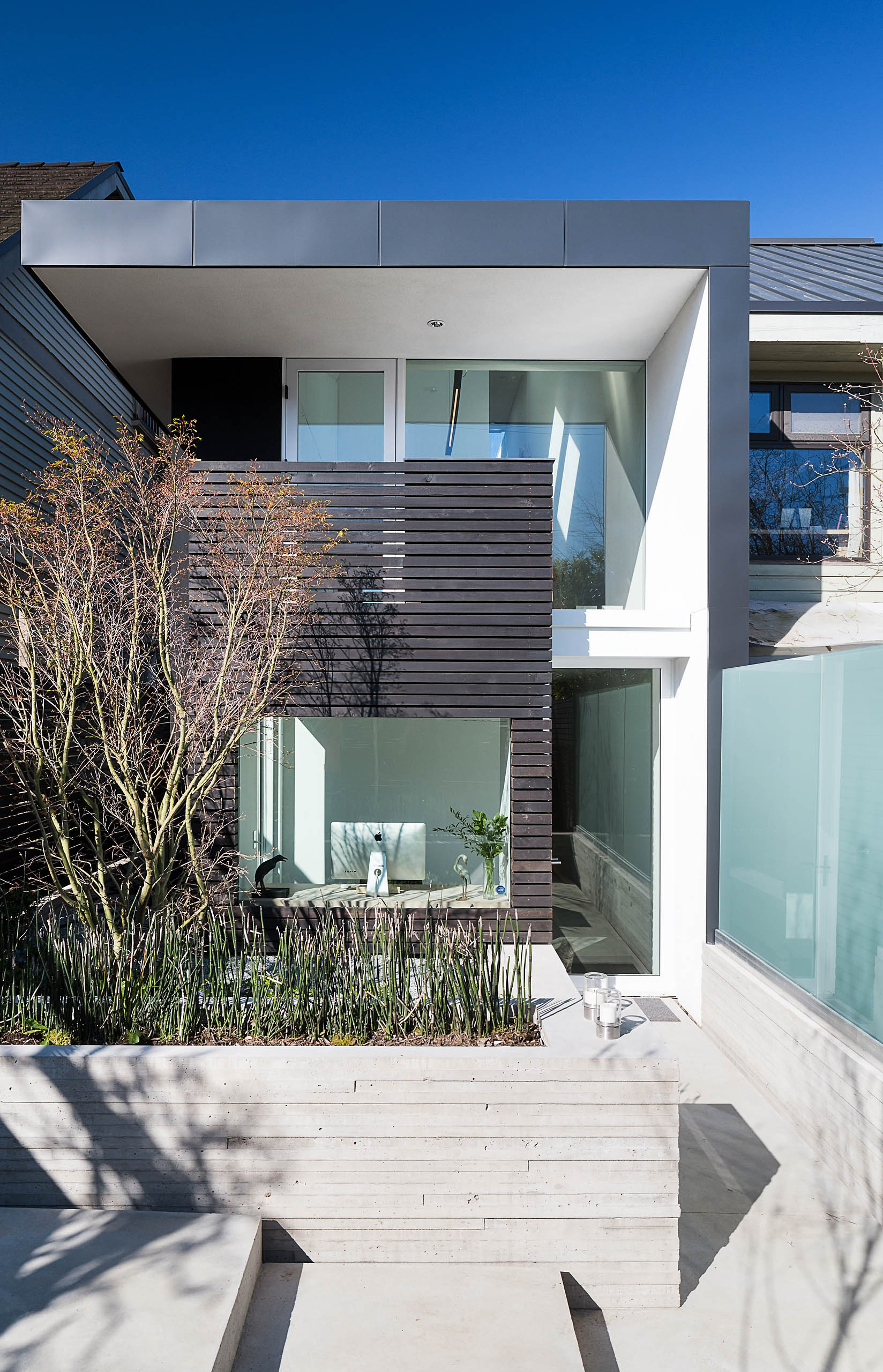
Photos: In addition to building wooden structures, Green’s work includes smaller-scale residential design. Photo by Ema Peter.
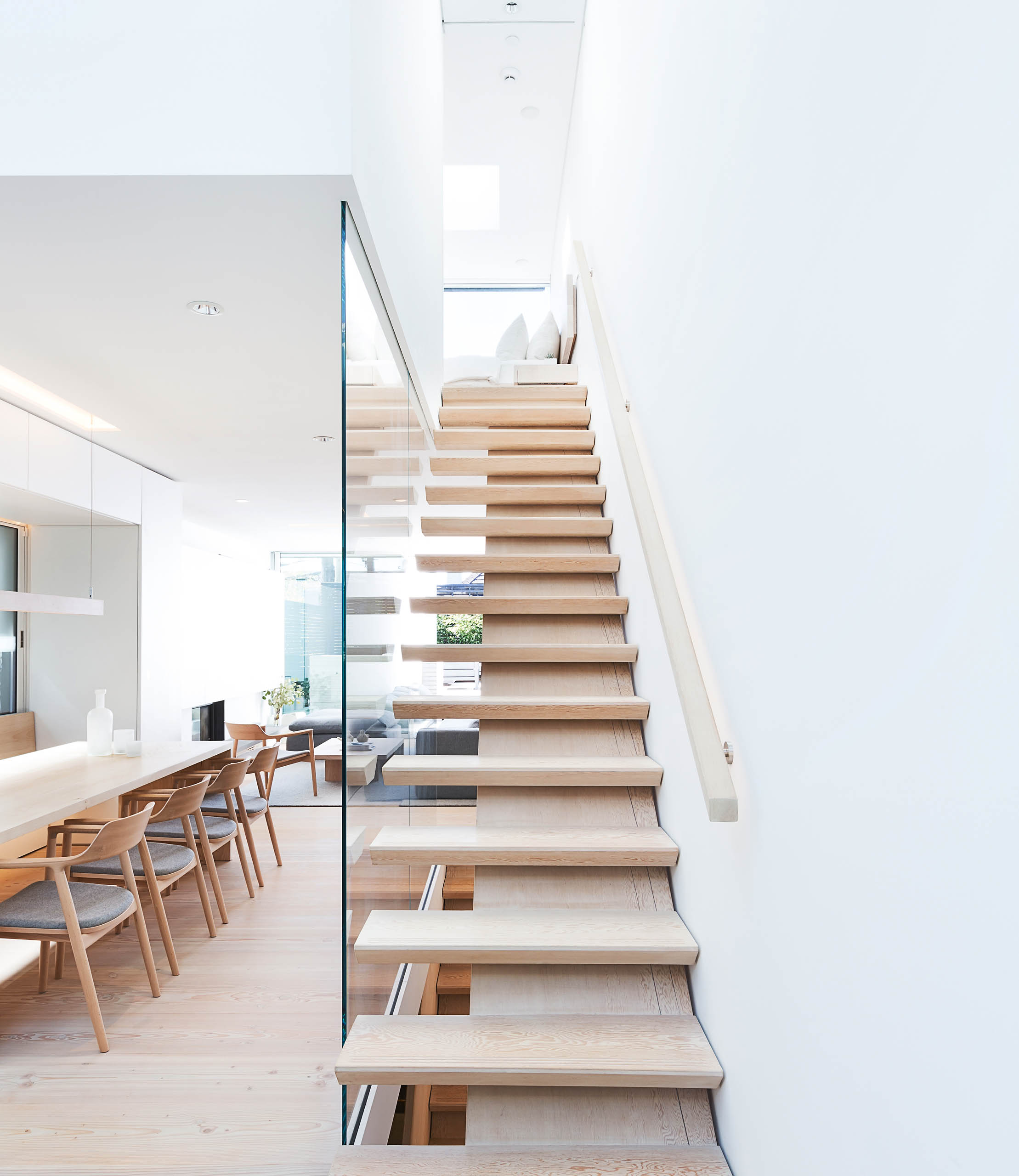
Photo by Ema Peter.
Not only is wood an appealing material, trees have something important to teach us about how to bend and not break, the choices they make, how to become tall and proud and sturdy and beautiful all at once. These lessons extend to organizations, to growing together, to growing despite all odds like the trees that perch on rocks by the ocean in British Columbia, where Green loves to paddle his kayak and spend time with friends and family on the Gulf Islands.
“There’s just so much nature’s figured out that we’re so primitive in understanding,” Green says. There’s a certain humility involved in looking at the world this way—one that isn’t always conducive to being a famous architect. “Each person’s job is to teach the person younger than them to replace them,” Green says of the organization of his own firm. He says that, in line with this tradition, he encourages his employees to take the job they are doing to their own firms and practices.Green thinks giving people a positive vision of the investment, both financial and environmental, that comes from mass timber products should be forefronted.
But the climate crisis needs leaders, and it needs plans that can take the technologies and organizational systems the geological, biological, and cultural spheres have been perfecting for eons. “Our job as architects is to be creative,” Green posits. “It’s not just to make buildings; it’s to find creative solutions to climate change.”
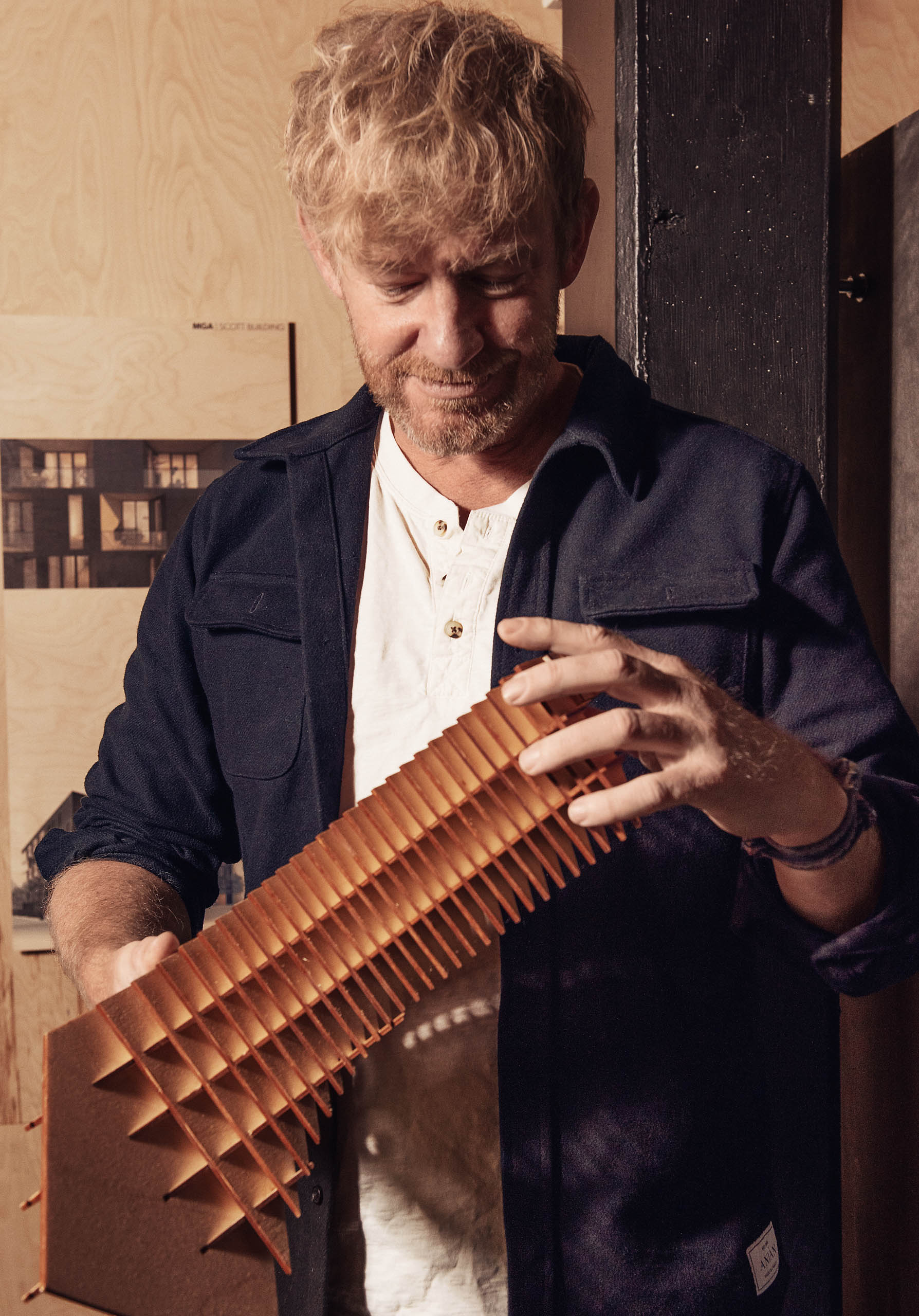
This means working with organizations and being progressive yet stoic. Green, for example, thinks giving people a positive vision of the investment, both financial and environmental, that comes from mass timber products should be forefronted. It’s a language people understand, and it reduces the paralysis and fear he thinks has soured the climate movement, a fear that has been profited from and led to green washing.
Seeing Michael Green’s work—the elegant skyscrapers of wood and glass that seem to almost grow out of the ground, the passive houses, the affordable developments—provides a glimmer of the future, one tucked, like a code, in the rings of trees.
The presence of trees is enough to provoke experiences like those Green had in Antarctica, and small design aspects can trigger healthy reactions—Green notes that people take thousands of fewer breaths a day in wood environments because of the calming effects. While he believes that the most profound innovations come from an understanding and openness to the Earth’s natural processes, it should be our hope, following his and others’ lead, that our built environment, our homes, can someday trigger something akin to these revelatory moments: moments of stillness, communion, and respite that come with the wind blowing through the leaves, propelling us into the future with fresh seeds.
Grooming by Tania Becker for Nobasura.


